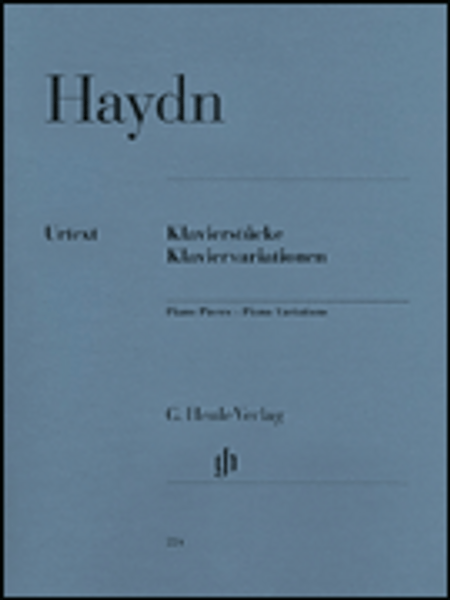Product Overview
Published by G. Henle Verlag. The works in this volume show the development of keyboard instruments in an exemplary manner: the early works were intended for harpsichord, two of which were for an instrument with the so-called “Viennese bass octave,” which enabled the musician to play chords larger than a hand span with one hand. In our edition, these passages have footnotes with suggestions on how to play them. The pianoforte was the inspiration behind the later works. Haydn was also happy to arrange his own compositions for piano, as with the “Largo assai” from the “Reiterquartett.” Christine Schornsheim, a specialist in historical performance practice, provided fingerings for this completely revised and extended Urtext edition. Contents: Capriccio in G, Hob. XVII:1 • Variations in A, Hob. XVII:2 • Variations in E-flat, Hob. XVII:3 • Andante after Hob. I:81 II • Allegretto in G Major after an aria from “La vera costanza” • Adagio after Hob. I:79 II • Menuett after Hob. I:85 III • Romance after Hob. I:85 II • Allegretto after the overture from “La vera costanza” • Adagio in F Hob. XVII:9 • Allegro after Introduzione from “La vera costanza” • Andante, Hob. I:53 II • Allegretto and Presto in G Major after Hob. III:41 IV • Capriccio (Fantasia) in C, Hob. XVII:4 • Bariations in C, Hob. XVII:5 • Variations in F minor, Hob. XVII: 6 • Adagio in G Urfassung von Hob.XV:22II • Largo assai in E after Hob. III:74 II • Poco adagio in G Major after the variations on “Gott erhalte,” Hob. III:77 II • Andante in C after Hob. I:94 II • Adagio in G after Hob. I:93 II • Menuett in C after Hob. I:97 III • Variations in A Major, Hob. XVII:2 • Variations in D, Hob. XVII:7







